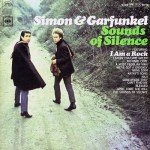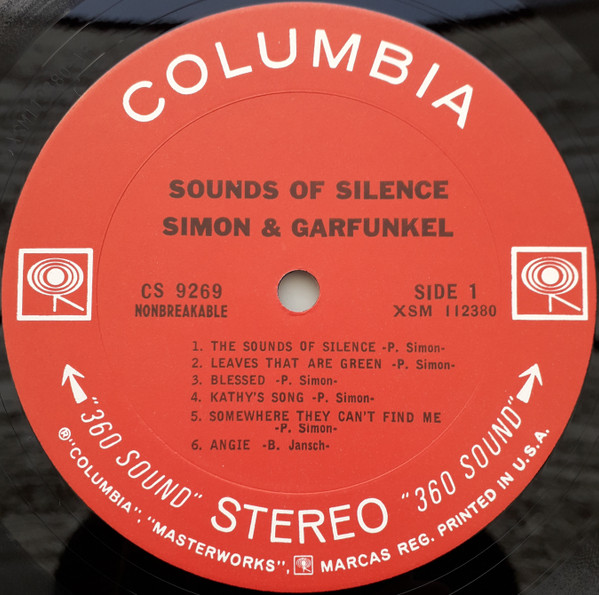 More of the Music of Simon and Garfunkel
More of the Music of Simon and Garfunkel
Reviews and Commentaries for the Music of Paul Simon (and Art Garfunkel)
Presenting another entry in our extensive Listening in Depth series with advice on what to listen for as you critically evaluate your copy of Sounds of Silence. Here are some albums currently on our site with similar Track by Track breakdowns.
Sounds of Silence is made from a second generation tape, as we explain below. Since we listen to all the records we sell, we like to point out such things so our customers know what they are getting.
This album is the proverbial tough nut to crack, a mix of folkie tracks and ambitious big production numbers, all recorded on a four track machine and bounced down maybe just a few too many times along the way. Some got handed a troublesome case of Top 40 EQ — hey, this is 1965, it’s the way they thought pop records should sound.
But many of the best tracks survived just fine. They can sound wonderful, it’s just that they rarely do. This is precisely where we come into the picture.
The key to good sounding pressings of this record is to look for the ones with a top end. Now of course you can’t see the top end when you buy the record. But most of the copies of this album you pick up are going to sound like cassettes. There won’t be much over 8K, and that means hard, harsh, transistor radio sound. You need extended highs to balance out the upper midrange.
- More Records that Have a Tendency to Lack Top End
- Records (Like this One) that Are Good for Testing Top End Extension
Although the rock tracks certainly come to life and really do sound good on the hottest of the hot copies, the folkie tracks are the real reason to buy these early pressings. They have the Tubey Magic that’s missing from virtually any reissue or digital format version.
 Best and Worst Tracks
Best and Worst Tracks
For the best sounding tracks try Leaves That Are Green on side one, and April Come She Will on side two.
Keep in mind that the big hit ”Sounds of Silence” will never sound much better than it does in the car. It’s basically the track from their previous album with rock instrumentation added, meaning an electric guitar, a second generation of tape and some extra distortion for good measure.
But on a superb copy, that track can still be surprisingly enjoyable. Not Demo Disc quality, just enjoyable.
Below you will find our moderately helpful advice for finding the best sounding pressings of Sounds of Silence.
In our experience the album sounds best this way:
Which simply means that the 360 label domestic stereo pressings win our shootouts, in this case without exception.
Side One
The Sound of Silence
Leaves That Are Green
Listen to the harpsichord in the left channel and tambourine in the right. On the best copies they will sound unbelievably good. The more veiled and distorted the sound, the more obvious the need for a better copy.
As our buddy JT says, that’s why we’re here.
Blessed
Kathy’s Song
We prefer the best stereo pressings, but some of the songs, including Richard Cory to take just one example, actually work better in Mono. Most of the Mono copies we’ve played bored us to tears, but one exceptionally good one actually showed us something. Of course it still holds true that the ultimate stereo copies are in a league of their own.
Somewhere They Can’t Find Me
Anji
Side Two
Richard Cory
A Most Peculiar Man
April Come She Will
A sweetheart! The best copies bring out the intimate and breathy quality of Garfunkel’s lead. Notice the care he takes with his phrasing, precisely the kind of thing real transparency allows you to hear. Fifty-odd years ago Mercury coined the term Living Presence to describe the effect, and we’re more than happy to go with that.
We’ve Got a Groovey Thing Goin’
I Am a Rock
Rolling Stone Picks the 500 Greatest Songs of All Time
#157 The Sounds of Silence
Simon wrote this as an acoustic ballad, but Simon and Garfunkel’s first single version died. While Simon was in England, Wilson, who was producing Bob Dylan’s “Like a Rolling Stone,” asked members of Dylan’s studio band to add electric guitar and drums. Columbia released the amplified “Silence,” which became a hit before Simon and Garfunkel had even heard it.